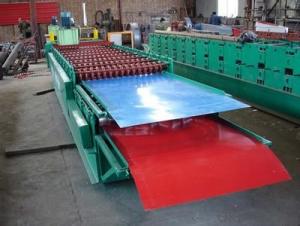When it comes to maintaining a comfortable and healthy indoor environment, one of the most critical aspects is ensuring proper airflow. Whether you’re dealing with a residential HVAC system or a commercial ventilation setup, the importance of seamless airflow cannot be overstated. And that’s where flexible duct connectors come into play. These versatile components are designed to provide a simple, efficient, and cost-effective solution for connecting ductwork and ensuring optimal airflow throughout your space.
The Role of Flexible Duct Connectors
Flexible duct connectors are an essential part of any HVAC or ventilation system. They serve as the link between various sections of ductwork, allowing for easy installation and maintenance. These connectors are made from flexible materials, such as plastic or metal, which makes them highly adaptable to different duct shapes and sizes. The flexibility of these connectors also helps in reducing noise and vibration, contributing to a quieter and more comfortable environment.
Benefits of Using Flexible Duct Connectors
There are numerous benefits to using flexible duct connectors in your HVAC or ventilation system. Here are some of the key advantages:
– Seamless Integration: Flexible duct connectors can be easily integrated into existing duct systems without the need for extensive modifications. This makes them an ideal choice for both new installations and retrofit projects.
– Custom Fit: They can be customized to fit the specific dimensions of your ductwork, ensuring a snug and secure connection that minimizes air leakage.
– Ease of Installation: The installation process is straightforward and can be completed with minimal tools and expertise, saving you time and labor costs.
– Cost-Effectiveness: Compared to rigid duct systems, flexible duct connectors are often more affordable, making them an attractive option for those looking to maximize their budget.
– Energy Efficiency: By ensuring proper airflow, these connectors contribute to the overall energy efficiency of your HVAC system, reducing the need for excessive energy consumption and lowering your utility bills.
Types of Flexible Duct Connectors
The market offers a variety of flexible duct connectors to suit different needs and preferences. Here are some common types you might encounter:
– Plastic Connectors: These are lightweight and easy to work with, making them a popular choice for DIY enthusiasts and professionals alike.
– Metal Connectors: Durable and long-lasting, metal connectors are ideal for high-temperature applications and heavy-duty use.
– Insulated Connectors: Designed to reduce heat loss or gain, insulated connectors are perfect for maintaining consistent airflow temperatures.
– Fire-Resistant Connectors: These connectors are made from materials that can withstand high temperatures, making them suitable for environments with strict fire safety regulations.
Installation Tips for Flexible Duct Connectors
Proper installation is crucial to ensure the effectiveness of your flexible duct connectors. Here are some tips to keep in mind during the installation process:
1. Measure Accurately: Before purchasing or cutting the connectors, make sure to measure the length and diameter of your ducts accurately to avoid any mismatches.
2. Clean the Ducts: Ensure that the duct surfaces are clean and free of debris to create a secure seal when connecting the ducts.
3. Use the Right Tools: Utilize the appropriate tools for cutting and securing the connectors to prevent damage to the connectors or the ducts themselves.
4. Check for Leaks: After installation, it’s essential to check for any air leaks by using a smoke pencil or an air leakage detection system.
5. Regular Maintenance: Schedule regular inspections and maintenance to ensure the connectors remain in good condition and continue to function effectively.
The Future of Flexible Duct Connectors
As technology advances, we can expect to see further improvements in the design and functionality of flexible duct connectors. Innovations such as self-adjusting connectors, smart monitoring systems, and even 3D-printed custom connectors could be on the horizon. These advancements will likely lead to even greater efficiency, easier installation, and more personalized solutions for homeowners and businesses alike.
Embracing the Benefits of Flexible Duct Connectors
In conclusion, flexible duct connectors are an indispensable part of modern HVAC and ventilation systems. They offer a range of benefits, from seamless integration and custom fit to ease of installation and cost-effectiveness. By understanding the different types of connectors available and following proper installation practices, you can ensure that your indoor environment remains comfortable, healthy, and energy-efficient. So, the next time you’re planning a ventilation project or upgrading your HVAC system, don’t forget to consider the role of flexible duct connectors in achieving seamless airflow.
Remember, the key to a well-functioning system lies in the details, and flexible duct connectors are one of those details that can make all the difference. Embrace the benefits they offer and enjoy the peace of mind that comes with knowing your indoor air is flowing smoothly and efficiently.

